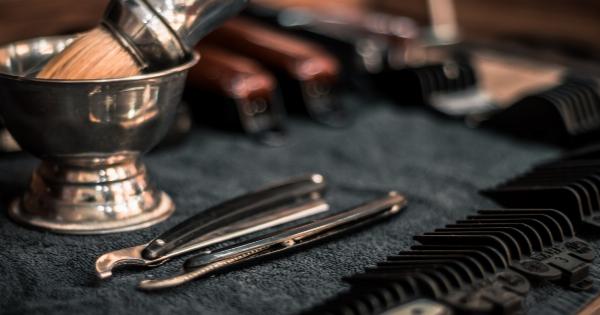Have you noticed how women tend to have shaggier, thicker, and longer hair than men? It’s not just a stereotype but a biological fact.
Women’s hair is more complex and diverse than men’s, and it grows differently due to hormonal and genetic factors. Although this makes women’s hair an essential part of their identity, it can also be a source of frustration and hassle if not managed properly.
In this article, we will explore the science behind women’s shaggy fur and provide practical tips on how to tackle it.
Hair Growth Cycles
Before we get into the details of hair care, let’s understand how hair grows. Hair growth is a cyclical process that occurs in three distinct phases: anagen, catagen, and telogen.
The anagen phase is the active growth phase that can last up to seven years in some individuals. During this phase, hair follicles produce new hair cells, and hair grows at a rate of about half an inch per month. The catagen phase is a transitional phase that lasts for about two weeks. During this phase, hair follicles shrink, and hair stops growing.
The telogen phase is a resting phase that can last up to three months. During this phase, old hair falls out, and new hair grows to replace it.
Overall, hair grows in cycles that can vary depending on genetics, age, health, and hormonal changes. Women’s hair tends to have longer growing cycles than men’s, which results in longer hair and more abundant hair on the scalp and body.
Hormonal Factors
Hormones play a crucial role in hair growth and texture, especially in women. Androgens, such as testosterone, influence the density, thickness, and distribution of hair in men and women.
Women produce small amounts of androgens in their ovaries and adrenal glands, which contribute to hair growth on the scalp, face, and body. However, excessive androgen production can lead to hirsutism, a condition characterized by excessive hair growth on the face, chest, back, and abdomen.
On the other hand, estrogen, the primary female sex hormone, can promote hair growth and thickness. Estrogen stimulates the anagen phase of hair growth, prolongs the growth cycles, and increases the size of hair fibers.
However, hormonal changes during pregnancy, menopause, and menstrual cycles can affect the quality and quantity of hair, leading to hair loss, shedding, or thinning.
Genetic Factors
Genetics also influence hair growth and texture, as hair type and color are determined by genes. There are three main types of hair: straight, wavy, and curly, determined by the shape of hair follicles.
Straight hair has round follicles, wavy hair has oval follicles, and curly hair has flat or elliptical follicles. Additionally, hair color is determined by the amount and type of melanin, a pigment produced by hair follicles. Blond hair has less melanin than brown or black hair, while gray hair has no melanin.
Moreover, genetics play a role in hair thickness, density, and distribution. Some people are blessed with thick, voluminous hair, while others have thin, fine hair.
Hair density refers to the number of hair follicles per square inch of scalp, and it can vary from person to person and from ethnicity to ethnicity. African hair, for example, tends to be more densely packed than Asian or Caucasian hair. Lastly, genetics also regulate the distribution of hair on the body, as some individuals have more hair on their arms, legs, and pubic areas than others.
Hair Care Tips
Now that we’ve covered the science behind hair growth and texture, let’s focus on how to tackle shaggy fur. Here are some practical tips to care for your hair:.
1. Wash your hair regularly
Washing your hair removes dirt, oil, and product buildup that can weigh it down and make it look greasy or limp. However, over-washing can strip your hair of natural oils and cause dryness, breakage, and split ends.
Experts recommend washing your hair every two to three days, depending on your hair type, texture, and lifestyle. Use a mild shampoo and conditioner that match your hair needs and avoid hot water and harsh chemicals that can damage your hair.
2. Condition your hair deeply
Conditioning your hair can improve its texture, shine, and manageability. A good conditioner should nourish your hair with essential oils, vitamins, and proteins that strengthen and protect it.
Deep conditioning treatments, such as hair masks, oils, or serums, can provide extra moisture and repair for damaged hair. Apply the conditioner from mid-length to the ends of your hair and leave it for a few minutes before rinsing it thoroughly with cool water.
3. Brush your hair gently
Brushing your hair can stimulate blood flow to the scalp, distribute natural oils, and detangle knots and kinks. Use a gentle brush, preferably with natural bristles, that won’t tug or pull your hair.
Start brushing from the ends and work your way up to the roots, using small sections of hair. Avoid brushing your hair when it’s wet, as it’s more prone to breakage and damage.
4. Protect your hair from heat and sun damage
Exposure to heat and sun can weaken your hair and make it dry, frizzy, and brittle. Use a heat protectant spray or serum before using hot styling tools, such as blow dryers, straighteners, or curling irons.
Keep the temperature low and don’t apply too much heat to the same section of hair. Also, wear a hat, scarf, or umbrella when you’re outside for prolonged periods to shield your hair from UV rays and pollution.
5. Trim your hair regularly
Trimming your hair every six to eight weeks can prevent split ends, breakage, and thinning. Split ends occur when the ends of your hair strands split into two or more parts, making your hair look frayed and damaged.
Trimming the split ends can keep your hair healthy and promote growth. The frequency of trimming depends on the length, style, and condition of your hair, so consult with your hairstylist for guidance.
Conclusion
Women’s shaggy fur is a natural and beautiful feature that deserves to be cared for and celebrated. By understanding the science behind hair growth and texture, we can take better care of our hair and enjoy its benefits.
Following these hair care tips can help you maintain healthy, shiny, and strong hair that reflects your personality and style. Whether you have wavy, curly, or straight hair, remember that your hair is unique and valuable, just like you.



























